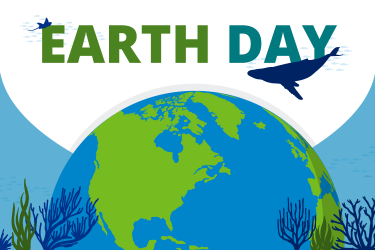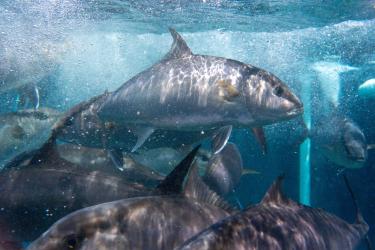Sharks are one of the top ocean predators. They play an important role in the food web and help ensure balance in the ocean’s ecosystem.
NOAA Fisheries manages commercial and recreational shark fisheries in the Atlantic Ocean and we work with three regional fishery management councils to conserve and sustainably manage sharks in the Pacific Ocean. By conducting research, assessing stocks, working with U.S. fishermen, and implementing restrictions on shark harvests, we have made significant progress toward ending overfishing and rebuilding overfished stocks for long-term sustainability.
Researchers Demonstrate Shark Vertebral Band Pairs Are Related to Growth, Not Time
Recent research demonstrates that previous methods used to determine the age of sharks have underestimated those ages, particularly in older sharks.
Learn more about new shark ageing research

White sharks are distributed but uncommon along the East Coast from Newfoundland and the Gulf of St. Lawrence in Canada to Florida, Cuba, the Bahamas and the Gulf of Mexico. They can grow to about 21 feet in length. Photo credit: Greg Skomal
Meet Lisa Natanson, Shark Researcher
Meet a NOAA shark researcher and learn more about her work.

Research biologist Lisa Natanson prepares to tag a shark.
12 Shark Facts that May Surprise You
Celebrate Shark Week by learning more about sharks, one of the ocean's top predators.
Check out these 12 surprising shark facts

Fishing for Sharks in the Gulf of Mexico
Get a behind the scenes look at how scientists monitor inter-annual variability of shark populations along the Atlantic Coast and in the Gulf of Mexico.
Learn more about the survey and see more photos here

Dusky Tracks: Satellite Tags Help Manage Fisheries Closures
Dusky sharks live along the U.S. East Coast, and are sometimes caught unintentionally by fishermen. Follow scientists and fishermen as they attach satellite tags to learn more about this shark’s movements and better manage our nation’s fisheries.
Estuarine Waters Home to Shark Nursery Habitat along East Coast
Each summer, scientists from the Northeast Fisheries Science Center (NEFSC) and colleagues in states along the East Coast conduct surveys in estuaries and nearshore waters to monitor and study known and suspected shark nursery habitat. The work is part of the Cooperative Atlantic States Shark Pupping and Nursery (COASTSPAN) program, an ongoing effort to understand what species live in these locations and why.

Sandbar shark
Shark Research and Conservation in and Around Hawaii
Scientists use telemetry (shark tags that transmit signals) to identify the underlying behaviors and environmental conditions that make certain species vulnerable to fisheries capture.
Learn more about our shark research and conservation efforts in Hawaii

Oceanic whitetip sharks are an important component of a healthy pelagic ecosystem.
The Pocket Shark: A Digital Dissection

More Shark Videos
A Symphony of Sharks
Watch this short ode to sharks and shark research.
A Mako Shark's Last Meal
See NOAA Fisheries biologist Antonella Preti perform a gut analysis on a 12 foot shortfin mako shark weighing 1,323 lbs. Analyzing shark stomachs helps build a database of who eats who eats who in the ocean, an essential tool in managing fisheries.



